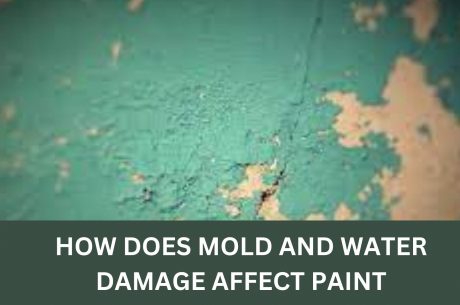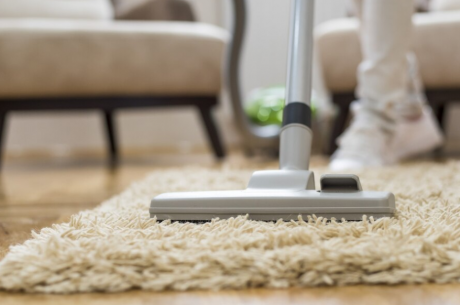Maintaining a clean and hygienic bathroom is essential for the overall well-being of your household. However, despite our best efforts, one common nuisance that often finds its way into our bathrooms is mold, especially in the toilet area. Not only is mold unsightly, but it can also pose potential health risks if left unchecked. Fortunately, tackling mold in the toilet doesn’t have to be a daunting task. With the right approach and a bit of elbow grease, you can effectively eliminate mold and prevent its return, ensuring a clean and fresh bathroom environment for you and your family.
In this guide, we’ll delve into the causes of mold in toilets and provide practical tips on how to remove it safely and efficiently. So, if you’re ready to bid farewell to mold and reclaim your sparkling clean bathroom, read on!
Before we dive into the specifics of removing mold from your toilet, it’s crucial to grasp the nature of mold itself. Mold is a type of fungus, and its spores, along with mildew, flourish in dark, humid environments—precisely the conditions often found in the bowl and tank of a toilet.
What causes black mold in toilet bowl?
If you’ve been away from home for just a few days, returning to find black mold in your toilet bowl or tank is not uncommon. This occurrence underscores how quickly mold can establish itself in areas where moisture and darkness converge.
Given that mold thrives in such conditions, it’s no surprise that your toilet bowl and tank provide an ideal habitat for its growth. Insufficient ventilation or the absence of exhaust fans in bathrooms exacerbates the problem, allowing these areas to remain consistently damp and dark—perfect conditions for mold to proliferate.
Black mold, often referred to as Stachybotrys chartarum, is a particularly concerning type of mold commonly found in damp and humid environments. While it’s more commonly associated with areas like basements and poorly ventilated spaces, it can also crop up in the toilet bowl.
Tools Needed to remove mold from toilet
Removing mold from a toilet requires a few essential tools and supplies to ensure effective cleaning and safety. Here’s a list of items you’ll need:
- Rubber Gloves: Mold can be hazardous to your health, so it’s essential to protect your hands with rubber gloves while cleaning.
- Face Mask: To prevent inhaling mold spores, wear a face mask or respirator rated for mold removal.
- Protective Eyewear: Safeguard your eyes with protective eyewear, such as goggles, to prevent irritation from cleaning solutions or mold spores.
- Scrubbing Brush or Sponge: Use a sturdy scrubbing brush or sponge to physically remove mold from the surface of the toilet bowl and tank.
- Toilet Brush: A toilet brush with stiff bristles is handy for scrubbing hard-to-reach areas inside the bowl, such as under the rim.
- Mold Remover or Cleaner: Choose a mold-specific cleaner or a household cleaner containing bleach, hydrogen peroxide, or vinegar, known for their mold-fighting properties.
- Spray Bottle: Fill a spray bottle with your chosen mold cleaner for easy application to affected areas.
- Old Toothbrush: An old toothbrush can be useful for detailing and reaching tight spaces where mold may be lurking.
- White Vinegar or Bleach: White vinegar or bleach diluted with water can be effective natural remedies for killing mold and preventing its return.
- Microfiber Cloth or Paper Towels: Use a microfiber cloth or paper towels to wipe down surfaces and remove excess moisture after cleaning.
Having these tools and supplies on hand will equip you to tackle mold in your toilet effectively and safely, restoring cleanliness and freshness to your bathroom environment.
How to Remove Mold in Toilet
Removing mold from a toilet requires a systematic approach to ensure thorough cleaning and prevent its recurrence. Here’s a step-by-step guide to effectively remove mold from your toilet:
- Put on Protective Gear: Before starting, don rubber gloves, a face mask, and protective eyewear to shield yourself from mold spores and cleaning solutions.
- Ventilate the Area: Open windows or turn on exhaust fans to improve ventilation and minimize exposure to fumes from cleaning products.
- Flush the Toilet: Flush the toilet to wet the surface and loosen any loose debris or mold buildup.
- Apply Cleaner: Spray a commercial mold remover or a mixture of bleach, hydrogen peroxide, or vinegar directly onto the affected areas inside the toilet bowl and tank. Ensure thorough coverage.
- Let it Sit: Allow the cleaner to sit for the recommended duration as per the product instructions. This allows the cleaner to penetrate and break down the mold.
- Scrub: Using a scrubbing brush or sponge, vigorously scrub the interior surfaces of the toilet bowl and tank, paying close attention to areas with visible mold growth. Use an old toothbrush to reach tight spaces and crevices.
- Flush Again: Once you’ve scrubbed the surfaces, flush the toilet to rinse away the loosened mold and cleaner residue.
- Repeat if Necessary: Stubborn mold may require multiple cleaning sessions. Repeat the process until the mold is completely removed.
- Wipe Down Surfaces: Use a clean microfiber cloth or paper towels to wipe down the toilet surfaces, removing any remaining moisture and cleaner residue.
- Dispose of Materials: Discard any used cleaning materials, such as gloves and cloths, properly to prevent spreading mold spores to other areas.
- Ventilate and Dry: Keep the bathroom well-ventilated and allow the toilet to air dry completely. Proper ventilation helps prevent moisture buildup, which can contribute to mold growth.
How to prevent mold in toilet
Now that you’ve successfully removed mold from your toilet, it’s essential to take preventive measures to inhibit its return:
- Regular Cleaning: Clean your toilet regularly, ideally at least once a week, to prevent mold and mildew buildup. Use a disinfectant cleaner or a mixture of vinegar and water to inhibit mold growth.
- Maintain Proper Ventilation: Ensure your bathroom has adequate ventilation by installing an exhaust fan or opening windows during and after showering. Proper airflow helps reduce humidity levels and prevents moisture buildup.
- Address Leaks Promptly: Repair any leaks or drips in the toilet tank or plumbing fixtures promptly to prevent water accumulation, which can foster mold growth.
- Keep Surfaces Dry: After using the toilet or cleaning, wipe down surfaces with a dry cloth to remove excess moisture. Pay particular attention to areas prone to moisture buildup, such as around the base of the toilet and under the tank lid.
- Use Mold-Resistant Products: Consider using mold-resistant toilet cleaning products or additives to deter mold growth between cleanings.
Contact PuroClean of Bulls head for Mold Remediation Services in New York – (347) 501-6155
We recommend that mold remediation and cleanup should be handled by professionals whenever possible. We specialize in mold removal and cleanup, as well as remediation of the source of mold odor to return your home or business to its pre-loss condition.
Mold remediation may be a time-consuming process, and PuroClean of Bullshead has the knowledge and technology needed for the job. Give us a call 24/7 at (347) 501-6155.
In conclusion, removing mold from your toilet is essential for maintaining a clean and healthy bathroom environment. By following the steps outlined above, you can effectively eliminate mold and prevent its return. Remember to wear protective gear, use appropriate cleaning solutions, and ensure proper ventilation during the cleaning process.
Additionally, implementing preventive measures such as regular cleaning, maintaining proper ventilation, and promptly addressing leaks can help inhibit mold growth in the future. With diligence and proactive maintenance, you can enjoy a sparkling clean toilet and a fresher, more hygienic bathroom for years to come. Say goodbye to mold and hello to a cleaner, healthier home!



